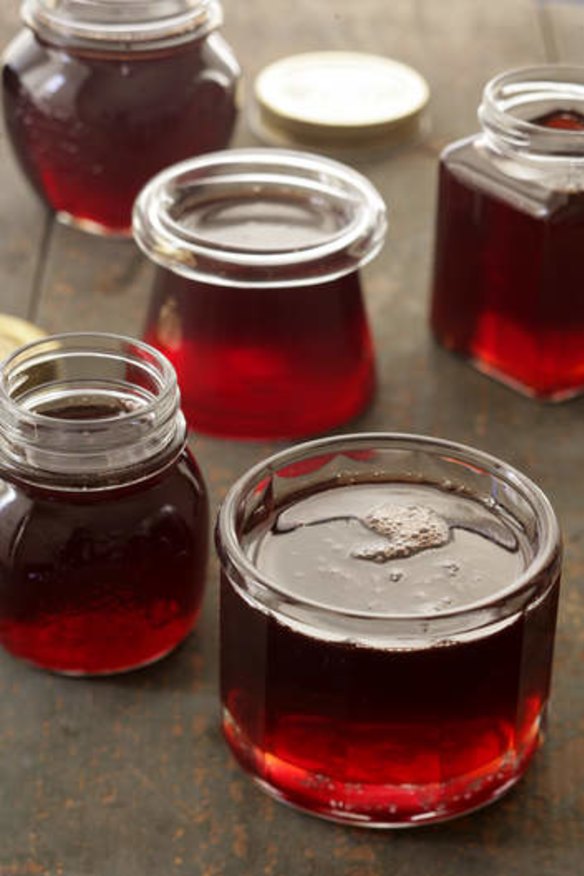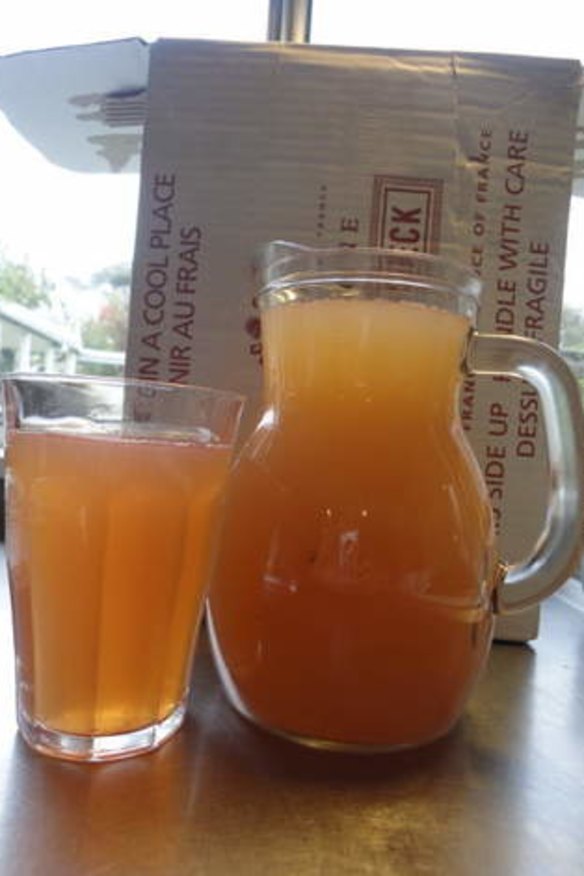Set for winter

Quinces have a fragrance like no other fruit, and when I walk past a bowl of quinces in the kitchen it always reminds me winter is on the way and the days are getting shorter and colder.
They also remind me of my father, who loved quinces.
Today, I have made quince jelly and quince marmalade.

Having made jams and jellies for years, I eventually learnt not to be too ambitious and to avoid picking too much fruit. I don't like the feeling of guilt as you watch the fruit deteriorate after you've picked it, wondering when you'll find time to work with it. Making smaller batches is good and I think you get a better product.
I have the perfect steamer for making jelly and quince paste. This stainless-steel steamer holds about two kilograms of cut quince. The bottom compartment has water, the second compartment has a basket to catch the juice (and a spout) and the fruit goes in the top. As it steams, it extracts perfectly clear juice, which you use for the jelly. The fruit pulp is soft for making quince paste. These steamers can be bought online. The one I own is a stainless-steel Mehu-Liisa steam juicer, made in Finland.
Scrub the quince of its fine fluff and roughly quarter them - do not peel or seed. Then steam. If you don't have a steamer, cover the chopped quinces with water and simmer until soft. Drain overnight through a piece of muslin. Don't squeeze or force the juice through or it will go cloudy. Set aside the juice for the jelly and the pulp for the paste.
Once the pulp is cool, remove the seeds and core and roughly mash the pulp, or put it through a sieve, or pass it through a Mouli ready for making the paste.
Robbie Howard is co-owner of Lynwood Preserves.
Quince jelly
2kg quinces, juiced
caster sugar
juice of 2 lemons
Measure the juice into the preserving pan. For each 600 millilitres of juice, measure out 400 grams of caster sugar and set aside. Bring the juice to a simmer then add the sugar and lemon juice. Dissolve the sugar over a low heat, then increase the heat. Boil the mix fast and begin testing for setting after 10 minutes. To test for setting, allow some to drop off a spoon. It should be thick and drop slowly. Check also that it will set by placing some on a cold saucer.
Remove from the heat and skim with a slotted spoon to remove any scum. Bottle into sterilised jars. To sterilise the jars, submerge the jars and lids in a pot of boiling water and simmer for five minutes. Remove with clean tongs and dry on a clean tea towel.
Quince paste
quince pulp
juice of 1 lemon
caster sugar
Weigh the fruit pulp and lemon juice and add to the preserving pan, adding an equal weight of sugar. Bring gently to the boil, stirring until the sugar has dissolved. Cook for about an hour, stirring frequently until it is thick and glossy. I wear rubber gloves at this stage, as it does bubble, burp and spit. The paste will begin to leave the sides of the pan as it thickens, becoming harder to stir. The colour will become dark red.
As soon as it reaches this point, pour it into a flat, greased and lined baking dish. Push it out as evenly as you can and, when it's cool enough to touch, slightly wet your hands and push it out to flatten it. (If it appears watery on the top, you can dry it out in the oven on a very gentle heat.)
Leave to cool. then turn out on to a board and cut into small squares to serve on a cheese plate. Store in greaseproof paper in the fridge for some months.
The best recipes from Australia's leading chefs straight to your inbox.
Sign up